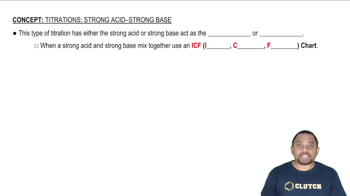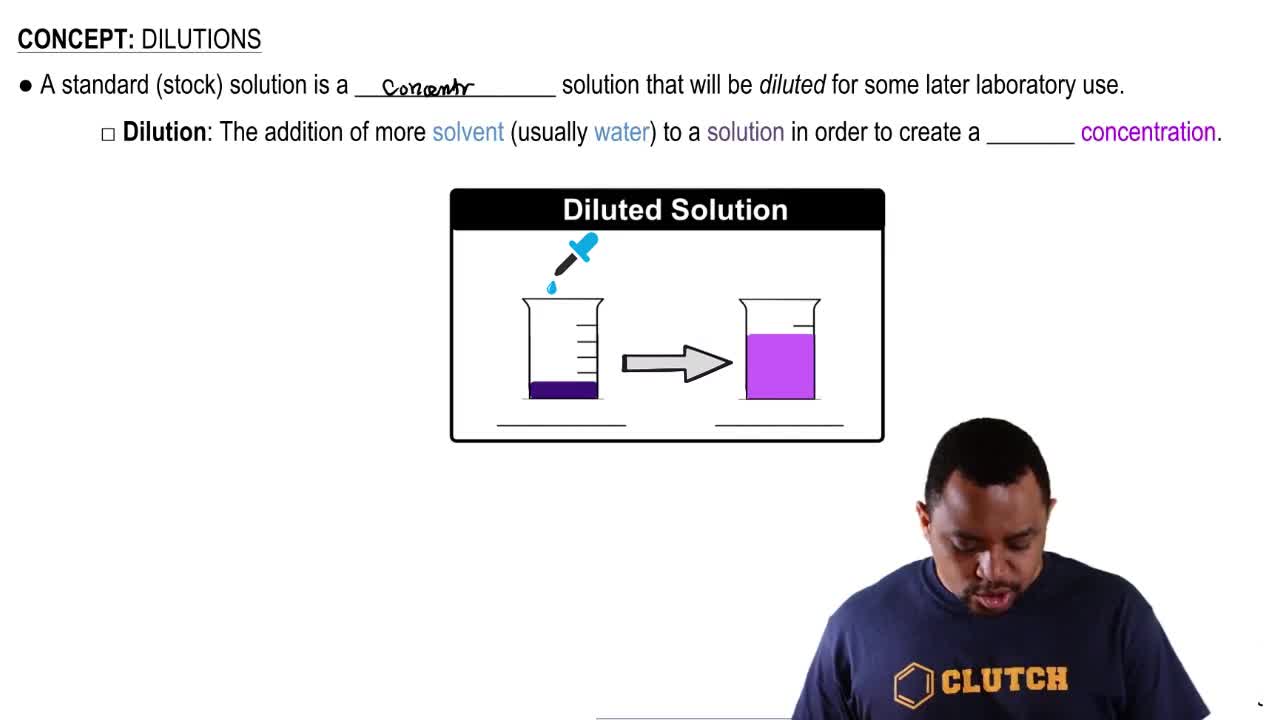Here are the essential concepts you must grasp in order to answer the question correctly.
Strong Acids
Strong acids are substances that completely dissociate in water, releasing all of their hydrogen ions (H+). This means that the concentration of H+ ions in a strong acid solution is equal to the concentration of the acid itself. For example, a 0.01 M HCl solution will have a pH of 2, as it fully dissociates to produce 0.01 M H+.
Recommended video:
Strong Acid-Strong Base Titration
pH Calculation
pH is a measure of the acidity or basicity of a solution, calculated using the formula pH = -log[H+]. For strong acids, since they fully dissociate, the pH can be directly determined from the molarity of the acid. For example, if the concentration of H+ is 0.0085 M, the pH can be calculated as pH = -log(0.0085).
Recommended video:
Dilution of Solutions
Dilution involves reducing the concentration of a solute in a solution, typically by adding more solvent. The dilution formula, C1V1 = C2V2, relates the concentrations and volumes before and after dilution. For example, if 5.00 mL of 0.250 M HClO4 is diluted to 50.0 mL, the new concentration can be calculated to find the resulting pH.
Recommended video:
Solution Dilution Process




